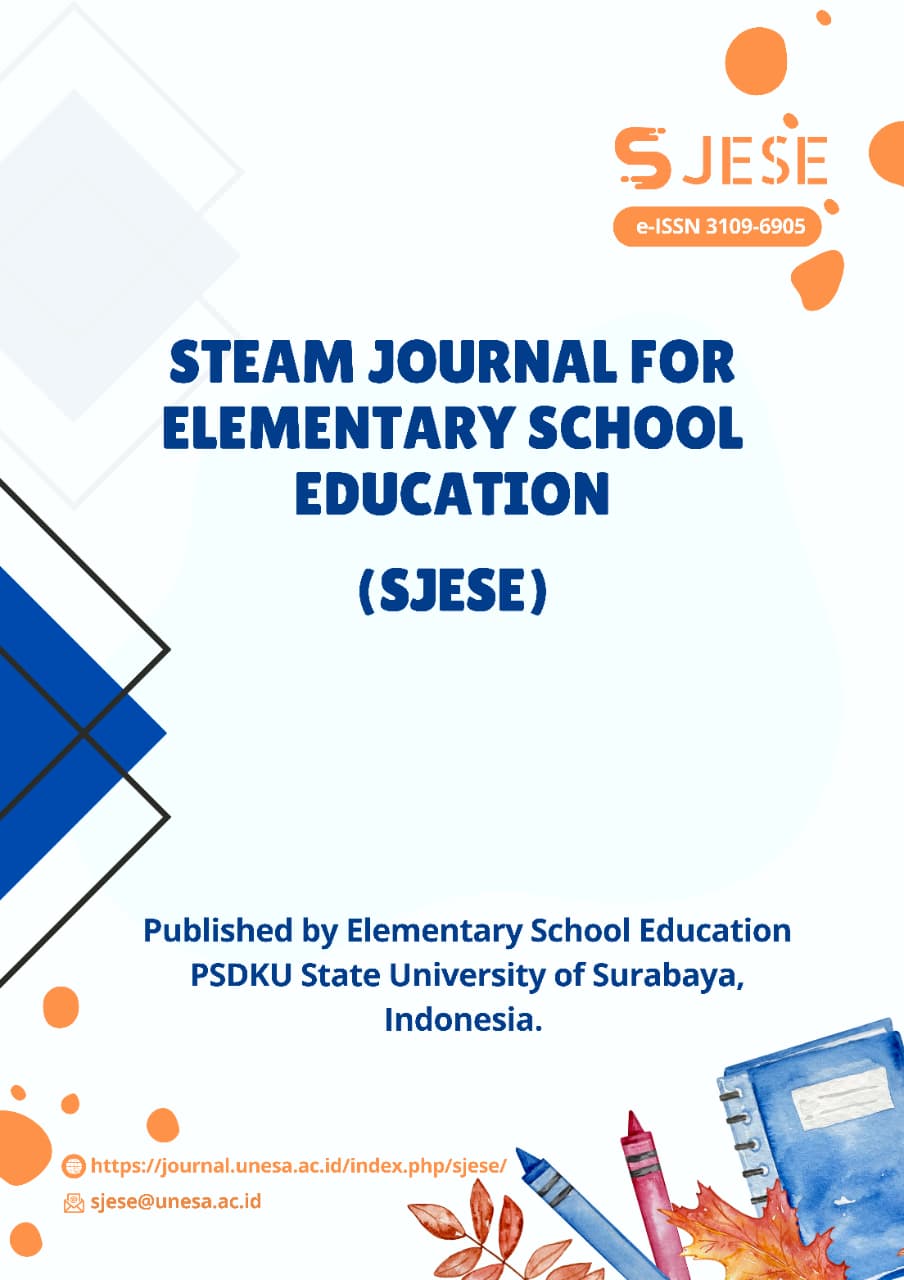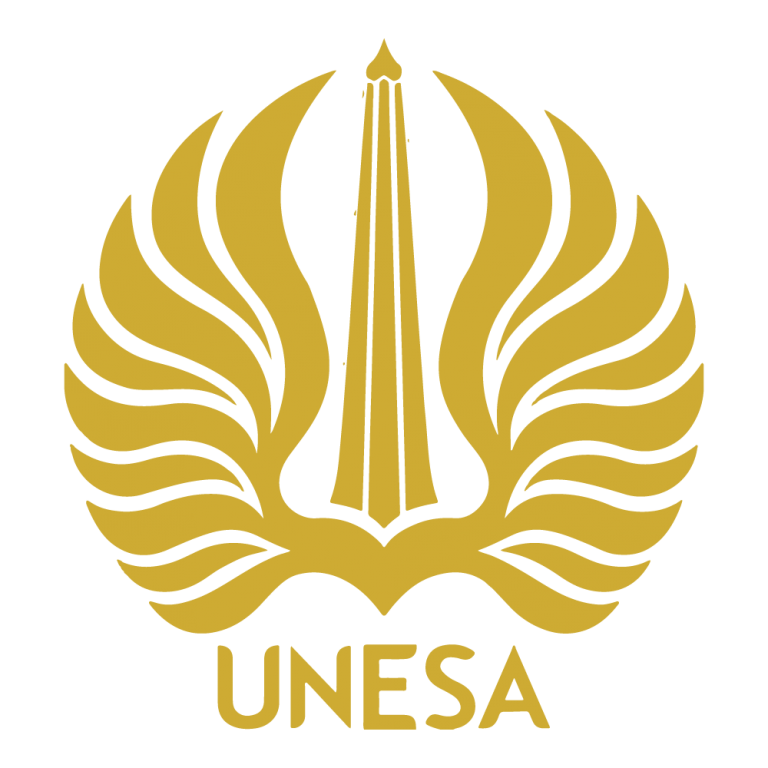The Effectiveness of Interactive Learning Media to Improve Understanding of Fractional Summing in Elementary School Students
DOI:
https://doi.org/10.26740/sjese.1.01.2025.2Keywords:
Addition of Fractions, Effectiveness, Interactive Learning Media, Mathematics LearningAbstract
The learning problems that occurred at Bustan El Firdaus Kawunganten Islamic Elementary School, Cilacap Regency, among others, are still centered on teachers and dominated by lecture methods. This condition causes low focus of students during learning and the emergence of boredom which has an impact on low understanding, especially in the subject of Mathematics where the material sums of fractions with different denominators are used. In response to this, the researcher designed improvements through Classroom Action Research using Kahoot interactive learning media. The novelty of this research lies in the integration of competitive and interactive real-time quiz-based digital media into mathematics learning at the elementary school level, which is still rarely applied systematically in the local context. The research was conducted in two cycles, each consisting of two meetings lasting two hours of lessons. The data collection technique uses quantitative instruments in the form of individual tests given at the end of each cycle. The average grade point of the class in the pre-cycle was 68 with a completion rate of 44.4%. In cycle I, the score increased to 77 with 72.2% completeness, and in cycle II it increased significantly to 89 with 83.3% completeness. The specific purpose of this study was to measure the effectiveness of Kahoot interactive media in improving understanding of the concept of fractional summation, increasing student active participation, and creating a more enjoyable and meaningful learning atmosphere. It is hoped that the results of this research can encourage teachers to use similar interactive media to improve the quality of mathematics learning in the classroom.
References
Agterberg, D. A., Oostdam, R. J., & Janssen, F. J. J. M. (2022). From speck to story: Relating history of mathematics to the cognitive demand level of tasks. Educational Studies in Mathematics, 110(1), 49–64. https://doi.org/10.1007/s10649-021-10093-6
Agustinova, D. E., Wulansari, N. L. T., & Fitriana, K. N. (2025). The Improving the Professional Competence of High School Teachers in Yogyakarta Through the Development of Classroom Action Research Management (PTK) Based on Android Mobile Applications. Journal of Science and Education (JSE), 5(2), 499–519. https://doi.org/10.58905/jse.v5i2.466
Akkuş, İ., Özhan, U., & Çakır, H. (2021). Student Views on the Use of Online Student Response Systems: The Kahoot! Case. Eğitimde Nitel Araştırmalar Dergisi, 9(1), 235–254.
Ariestuti, P. D., Darsana, I. W., & Kristiantari, M. R. (2014). Penerapan Pendekatan Contextual Teaching and Learning (CTL) untuk Meningkatkan Keaktifan dan Hasil Belajar IPA Siswa Kelas VI SDN 3 Tonja Tahun Ajaran 2014/2015. MIMBAR PGSD Undiksha, 2(1).
Kusumaningrum, D. S. (2021). Comparison of mathematics learning outcomes and habits of mind between senior high school and vocational high school graduates of informatics engineering study program. AIP Conference Proceedings, 2331(1), 020017. https://doi.org/10.1063/5.0042085
Licorish, S., & Lötter, A. (2022). When Does Kahoot! Provide Most Value for Classroom Dynamics, Engagement, and Motivation?: IS Students’ and Lecturers’ Perceptions. Journal of Information Systems Education, 33(3), 245–260.
Lubis, I. S., & Ulfah, S. (2024). The implementation of Kahoot! Based assessment and its impact on students’ motivation in learning mathematics. Jurnal Inovasi Dan Teknologi Pembelajaran, 11(2), 106–115. https://doi.org/10.17977/um031v11i22024p106
Schoenfeld, A. H. (2021). Why Are Learning and Teaching Mathematics So Difficult? In M. Danesi (Ed.), Handbook of Cognitive Mathematics (pp. 1–35). Cham: Springer International Publishing. https://doi.org/10.1007/978-3-030-44982-7_10-1
Silvia, S., Fitrianna, A. Y., & Hendriana, H. (2023). The Implementation of Scientific Approach to Improve Mathematical Understanding Ability on Junior High School Students. (JIML) Journal of Innovative Mathematics Learning, 6(3), 194–201. https://doi.org/10.22460/jiml.v6i3.17615
Wibowo, H. P., Nurliana, E., Aryanis, D. F., & Nugroho, O. F. (2022). Analisis Pemanfaatan Media Kahoot Sebagai Inovasi Pembelajaran. Seminar Nasional Ilmu Pendidikan Dan Multi Disiplin, 5(01). Retrieved from https://prosiding.esaunggul.ac.id/index.php/snip/article/view/274
Yuliansih, E., Arafat, Y., & Wahidy, A. (2021). The influence of learning media and learning interests on student learning outcomes. JPGI (Jurnal Penelitian Guru Indonesia), 6(2), 411–417. https://doi.org/10.29210/021064jpgi0005
Zaini, A. W., Susilawati, S., & Astuti, R. N. (2022). Improving Student Learning Outcomes Through The Development Of Videoscribe Sparkol-Based Learning Media. Jurnal At-Tarbiyat :Jurnal Pendidikan Islam, 5(3). https://doi.org/10.37758/jat.v5i3.512
Zhou, L., Zuo, T.-T., Kwok, C. Y., Kim, S. Y., Assoud, A., Zhang, Q., … Nazar, L. F. (2022). High areal capacity, long cycle life 4 V ceramic all-solid-state Li-ion batteries enabled by chloride solid electrolytes. Nature Energy, 7(1), 83–93. https://doi.org/10.1038/s41560-021-00952-0
Downloads
Published
Issue
Section
 Abstract views: 139
,
Abstract views: 139
, PDF Downloads: 78
PDF Downloads: 78









